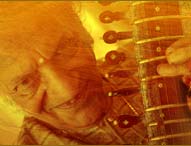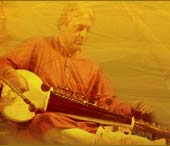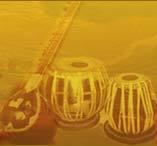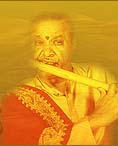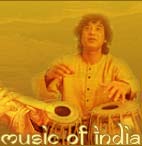The Sarod is amongst the famous stringed Indian classical musical instruments. It is believed that the main foundation of Sarod seems to be the Rebab, a similar instrument that is said to have been invented in Afghanistan and Kashmir. It is also assumed that the Sarod is truly like a bass Rebab. Some of the intellectuals of Indian classical music believe that Sarod is an amalgamation of the ancient Chitra Veena, the Rebab and the new Sursingar. Sarod is one of the most significant musical instruments of the artists and scholars of Indian classical music. It is similar to the western lute in structure. Well-known for a deep, heavy and meditative sound, it produces the continuous slides between the notes known as meend (glissandi) which is a part of Indian classical music. Sarod is also considered as one of the prominent concert instruments of North Indian classical music.
History of Sarod
Originating from the Rebab, a musical instrument of the Middle East, use of Sarod in Indian classical music can be traced back to the greatest musician 'Tansen'. It is also said that Saheb Asadullah Khan began the use of Sarod as a musical instrument in Bengal in earlier days. Thereafter, Bengal became famous for manufacturing this musical instrument. Sarod is made of teak wood. The neck and peg box of this musical instrument is made up of a single piece of wood. This is generally three by three and a half feet long. The fingerboard of Sarod is of polished metal plate, which enables to slide the finger along the strings. This is played with a tool made of coconut shell and is called 'Jaba'. One of the unique features of the Sarod is that, it is fretless. However other stringed musical instruments have fret. Sarod has four to five metal strings which are tuned as Pa Sa Pa Sa Ma and Sa Pa Sa Ma, respectively. The lowest string is made of brass and the rest are of steel. Along with this, it has three to five Chikari strings and eleven to sixteen sympathetic strings.
Famous Sarod Players
Mohammad Hashmi Khan Bangash, ancestor of Ustad Amjad Ali Khan can be considered as the first notable Rebab player. In the seventeenth century, he came to India with the Rebab. The tradition was carried forward by his descendants mainly his grandson Ghulam Ali Khan Bangash, who transformed the Rebab into the present day Sarod. Murad Ali was the first one to use fingerboard made of steel on Sarod. This stringed musical instrument got the recognition as a prominent instrument in the year 1820 in Rewa, Gwalior and Lucknow Gharana of music. Ustad Allauddin Khan is also credited with giving the Sarod some finishing touches and its modern form. The most popular Sarod players of present time are Ustad Amjad Ali khan and Ali Akbar Khan. The two sons, Aman and Ayan of Ustad Amjad Ali Khan are talented Sarod players and are known as 'upcoming masters'. They are the seventh generation in the family to carry on the tradition of playing Sarod.
